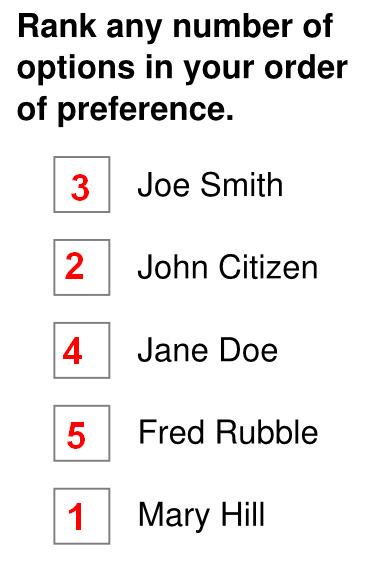 | ||
Preferential block voting is a majoritarian voting system for electing several representatives from a single multimember constituency. Unlike the single transferable vote, preferential block voting is not a method for obtaining proportional representation, and instead produces similar results to plurality block voting, of which it can be seen as the instant-runoff version. Under both systems, a single group of like-minded voters can win every seat, making both forms of block voting nonproportional.
Contents
Casting and counting the ballots
In preferential block voting, a ranked ballot is used, ranking candidates from most to least preferred. Alternate ballot forms may have two groupings of marks, first giving n votes for an n seat election (as in traditional bloc voting), but also allowing the alternate candidates to be ranked in order of preference and used if one or more first choices are eliminated.
Candidates with the smallest tally of first preference votes are eliminated (and their votes transferred as in instant runoff voting) until a candidate has more than half the vote. The count is repeated with the elected candidates removed and all votes returning to full value until the required number of candidates is elected. An example of this method is described in Robert's Rules of Order.
Effects of preferential block voting
With or without a preferential element, block voting systems have a number of features which can make them unrepresentative of the diversity of voters' intentions. Block voting regularly produces complete landslide majorities for the group of candidates with the highest level of support. Under preferential block voting, a slate of clones of the first winning candidate are guaranteed to win every available seat. Although less representative, this does tend to lead to greater agreement among those elected.
Usage of preferential block voting
Block voting was used in the Australian Senate from 1901 to 1948; from 1918, this was preferential block voting.
